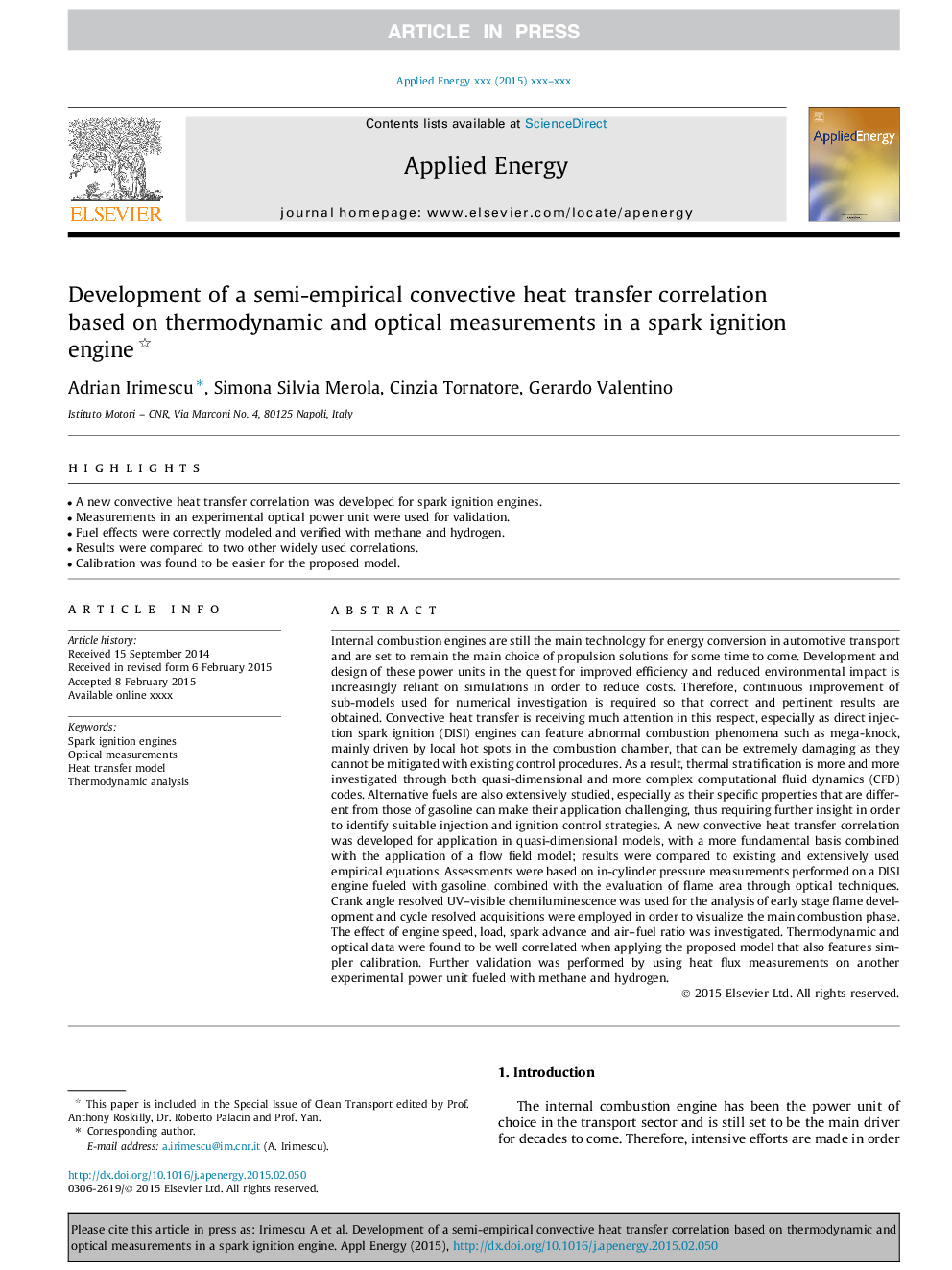| Article ID | Journal | Published Year | Pages | File Type |
|---|---|---|---|---|
| 6686083 | Applied Energy | 2015 | 12 Pages |
Abstract
Internal combustion engines are still the main technology for energy conversion in automotive transport and are set to remain the main choice of propulsion solutions for some time to come. Development and design of these power units in the quest for improved efficiency and reduced environmental impact is increasingly reliant on simulations in order to reduce costs. Therefore, continuous improvement of sub-models used for numerical investigation is required so that correct and pertinent results are obtained. Convective heat transfer is receiving much attention in this respect, especially as direct injection spark ignition (DISI) engines can feature abnormal combustion phenomena such as mega-knock, mainly driven by local hot spots in the combustion chamber, that can be extremely damaging as they cannot be mitigated with existing control procedures. As a result, thermal stratification is more and more investigated through both quasi-dimensional and more complex computational fluid dynamics (CFD) codes. Alternative fuels are also extensively studied, especially as their specific properties that are different from those of gasoline can make their application challenging, thus requiring further insight in order to identify suitable injection and ignition control strategies. A new convective heat transfer correlation was developed for application in quasi-dimensional models, with a more fundamental basis combined with the application of a flow field model; results were compared to existing and extensively used empirical equations. Assessments were based on in-cylinder pressure measurements performed on a DISI engine fueled with gasoline, combined with the evaluation of flame area through optical techniques. Crank angle resolved UV-visible chemiluminescence was used for the analysis of early stage flame development and cycle resolved acquisitions were employed in order to visualize the main combustion phase. The effect of engine speed, load, spark advance and air-fuel ratio was investigated. Thermodynamic and optical data were found to be well correlated when applying the proposed model that also features simpler calibration. Further validation was performed by using heat flux measurements on another experimental power unit fueled with methane and hydrogen.
Related Topics
Physical Sciences and Engineering
Energy
Energy Engineering and Power Technology
Authors
Adrian Irimescu, Simona Silvia Merola, Cinzia Tornatore, Gerardo Valentino,
